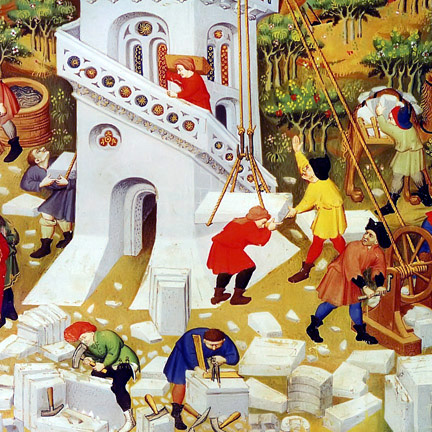Are You Killing Vision?

Three stonemasons in the Middle Ages were hard at work when a visitor came along and asked them what they were doing. The first stone mason was hard at work, sweat beading his brow. “I am cutting this stone,” he grumbled. The second stone mason, though less distraught, responded with a deep sigh, “I’m building a parapet.” The third stone mason replied with a radiant face, “I am building a beautiful cathedral that will glorify God for centuries to come.” — Author unknown
Vision. The greatest accomplishments in science, art, business, politics or individual life have all come from vision. Despite this simple, fundamental fact – identifying or clarifying vision often feels elusive, confusing or frustrating for many people. But, it doesn’t have to be.
What is a Clear & Compelling Vision?
Vision is simply the answer to a couple of questions like: ‘Why?’ or ‘So what?’ or ‘What does all of this add up to, anyway?’ In the story above, the first two stone masons answered the question literally and individually. The first could only see his task – he was cutting stone. The second understood his goal – he was building a parapet, part of the ornamental top of the wall.
However, the third stone mason had vision. He saw a beautiful building and he could feel what that building would accomplish. His vision was bigger than his own contribution; and it was even bigger than his current time frame.
Where does Vision come from?
From visionaries: Some people just naturally have great and compelling ideas. They can see possibilities and communicate them to others. This is where most people believe that vision comes from. But there is another source…
From ‘the group’: This could also be the team, the stakeholders, the constituency, or the congregation. People need vision. But we don’t necessarily need visionary leaders. What we need are leaders who know how to identify and articulate an inspiring vision of the future – wherever they get it. Frequently, profoundly compelling vision lies within the hearts and minds of those being led. An effective leader or leadership team will learn how to pull vision out of people, clean it up, and present it such a way that everyone can identify with it.
Once identified, vision can be cared for; or, vision can be killed.
Four Ways We Kill Vision:
- Lack of Execution or Implementation: When a vision is articulated but no steps are taken, both vision and credibility are lost. If you say you are going to build a cathedral, people will expect follow-through.
Effective leaders begin implementation quickly and help others see that implementation.
- Lack of Perseverance: The beginning pursuit of ‘vision’ is often very exciting. Then, there’s almost always a stage of ‘grunt work’ and persistence. That stage may last months, or even years. This is where many ‘visionary’ leaders start to drop off, get distracted, or chase a different vision. It’s also a reason why, in some cases, there is more value in generating vision from teams. If you quit building the cathedral in the middle, it could cost the vision-bearer credibility.
Effective leaders prepare for the long haul. Whether this means personal involvement or a responsible handoff – they don’t quit when the excitement fades or the easy work is done.
- Inability to See How Our Work Contributes: The first stone mason couldn’t see how his work contributed to the larger picture. He probably knew he was working on a ‘cathedral project’. But in his mind – he just cut stones. This lack of connection to something larger kills vision. When administrative and background staff can’t see how they contribute to the big picture, their motivation and connection will wane.
Effective leaders help everyone see how their work is valuable. They regularly connect (and reconnect) the dots between the work of each person, the work of the team, and the success of the vision.
- Inability to See How We Are Part of a Team: The second stone mason knew what he was personally trying to build; but, he was only concerned about his personal part of the project. Maybe this was due to pride; or, maybe it was the only part of the project he had been told about. Either way, he didn’t see the ‘whole’. He only saw his parapet. The development of silos and lack of collaboration within an organization is often due to a lack of being able to see how ‘our work fits together‘.
Effective leaders help everyone see and value the contribution of others.
How will you, as an effective leader, capture, cultivate and care for vision?
Article Categories
Popular articles

Download my free 10-page eBook:
How To Accomplish More Without Doing More:
Eight Proven Strategies To Change Your Life
Discover how to save eight hours during your workweek-even if you're too busy to even think about it. The resource every maxed out executive needs.